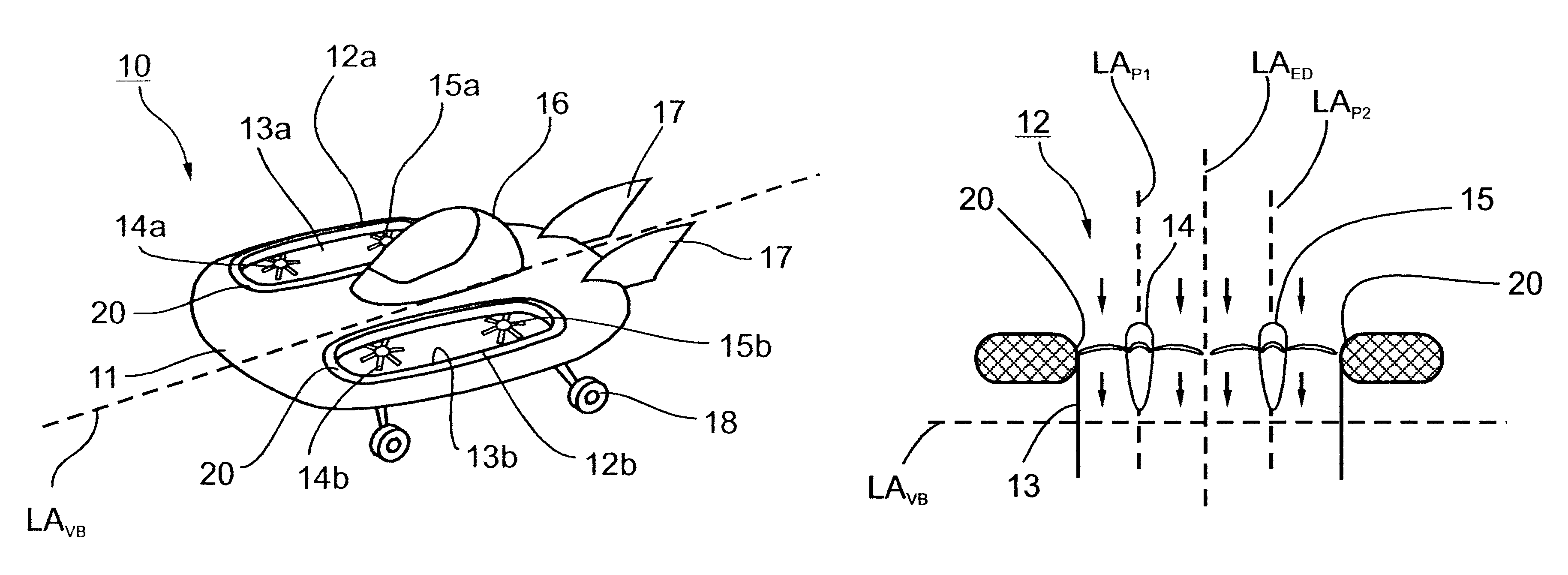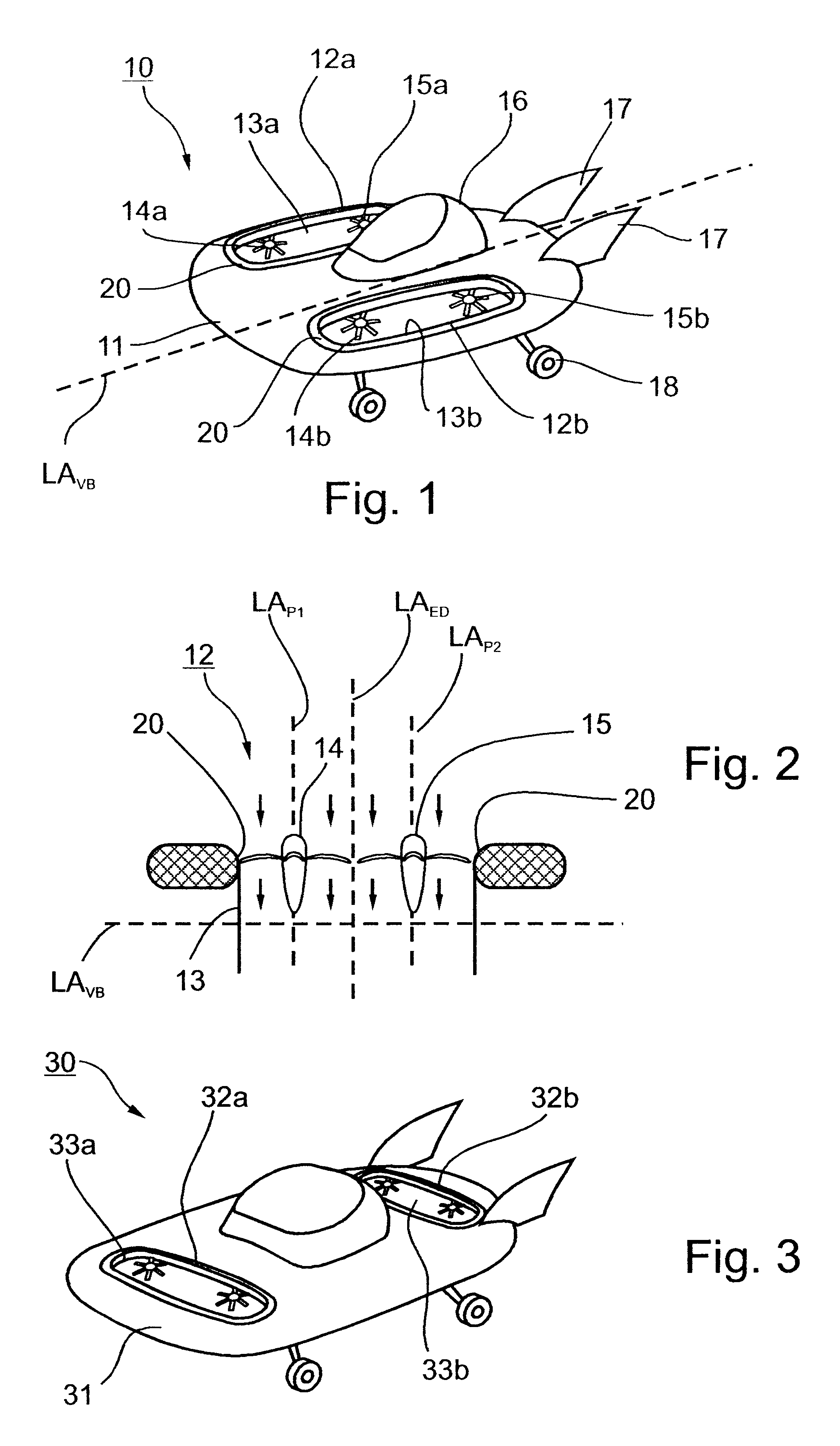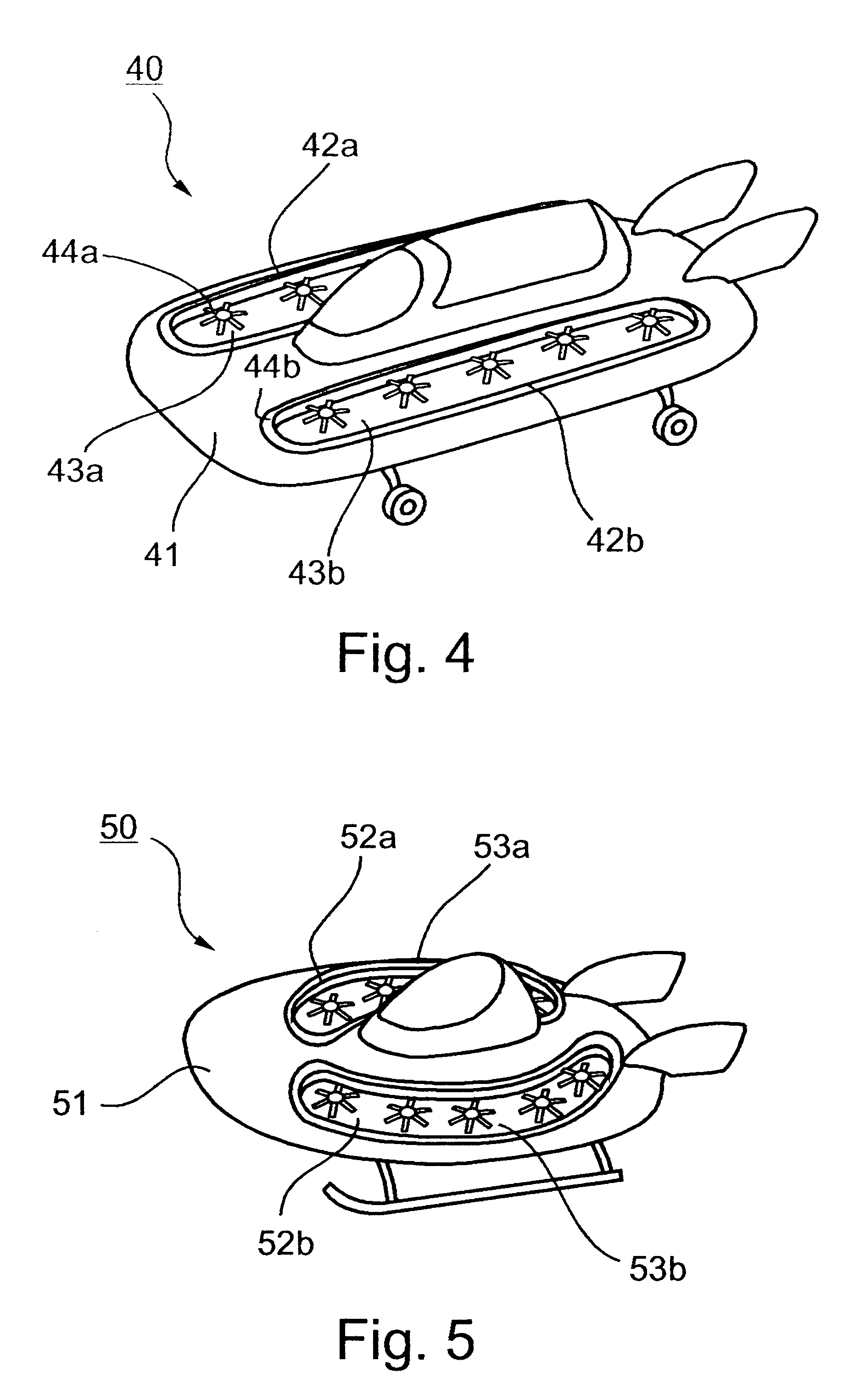Ducted vehicles particularly useful as VTOL aircraft
a ducted vehicle and aircraft technology, applied in the field of vehicles, can solve the problems of not enabling the maximum deck surface of the vehicle, adding to the overall weight of the vehicle, and hovering of the vtol vehicle with sometimes zero forward airspeed, etc., to increase the efficiency of the lift force, facilitate entry and exit, and increase the effect of the lift force produced
- Summary
- Abstract
- Description
- Claims
- Application Information
AI Technical Summary
Benefits of technology
Problems solved by technology
Method used
Image
Examples
Embodiment Construction
FIG. 1 illustrates a VTOL (Vertical Take-off and Landing) aircraft vehicle, generally designated 10, including a vehicle body or fuselage 11 carrying two ducted propulsion units 12a, 12b on opposite sides of the horizontal longitudinal axis LA.sub.VB of the vehicle body. Each of the ducted propulsion units 12a, 12b includes an elongated duct 13a, 13b, and a pair of rotary propellers 14a, 14b and 15a, 15b, respectively mounted within and enclosed by the respective elongated duct 13a, 13b. The vehicle illustrated in FIG. 1 further includes a payload, in the form of a cabin 16, a pair of vertical stabilizers 17, and landing gear 18.
The ducted propulsion units 12a, 12b, in the vehicle illustrated in FIG. 1 include rotary propellers 14a, 14b, 15a, 15b mounted with their rotary axes perpendicular to the horizontal longitudinal axis LA.sub.VB of the vehicle body. This is more particularly shown in the diagram of FIG. 2 wherein the ducted propulsion unit is generally designated 12, and the ...
PUM
 Login to View More
Login to View More Abstract
Description
Claims
Application Information
 Login to View More
Login to View More - R&D
- Intellectual Property
- Life Sciences
- Materials
- Tech Scout
- Unparalleled Data Quality
- Higher Quality Content
- 60% Fewer Hallucinations
Browse by: Latest US Patents, China's latest patents, Technical Efficacy Thesaurus, Application Domain, Technology Topic, Popular Technical Reports.
© 2025 PatSnap. All rights reserved.Legal|Privacy policy|Modern Slavery Act Transparency Statement|Sitemap|About US| Contact US: help@patsnap.com



